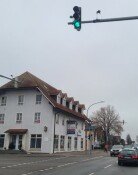Birthrate Drops to Lowest Level Ever
Birthrate Drops to Lowest Level Ever
Posted August. 25, 2004 21:55,
About 490,000 babies were born last year, falling to its lowest level ever. This figure is only half of the number of those born in the 1970s, when some 900,000 babies were born each year.
It was analyzed that with the number of women in their twenties decreasing, and fewer women getting married, many are avoiding having babies from the recession.
According to 2003 statistics for births and deaths announced by the National Statistical Office (NSO) on Wednesday, 493,500 babies were born last year, a decrease of 1,100 from the previous years 494,600 babies, and it was the lowest figure since the data was first collected in 1970.
The annual number of newborns was approximately one million in 1970, but dropped to 724,000 in 1993 and fell below 500,000 for the first time in 2002. The number of newborns per 1,000 people was 10.2 babies, dropping by 0.1 from the previous year. This is merely a third of the data from 1970 (31.2 babies per 1,000).
The birth rate for women during their possible pregnancy period (ages 15 through 49) was 1.19, increasing by 0.02 from the previous year. However, this rate was among the lowest of the Organization for Economic Cooperation and Development (OECD) countries. Japans rate was 1.29, Britains was 1.73, and the U.S. rate was 2.01 (based on 2002 figures).
Jeong Chang-shin, director of the Vital Statistics division at the NSO, said, As the number of women who are able to give birth dropped, the birthrate did increase slightly, but to maintain the current population, the birth rate must at least reach a score of 2.1. If this trend continues, the population will start to fall around 2022.
The number of twins per 100 babies born was two, reaching the two percent level for the first time.
The sex ratio (number of boys per 100 girls) of newborns was 108.7, approaching the normal ratio (105, plus or minus two). The ratio in Ulsan and Kyeongnam Province was 115.6 and 113.7 respectively, exceeding the national average by a significant amount.
The death toll for last year was 245,800, remaining at a similar level from that of 10 years ago (240,000). The death rate for men in their 40s and 50s was three times higher than that of women, showing a higher early death rate in men. Meanwhile, as for places of death, hospital death rates (45.1 percent) passed home death rates (42.6 percent) for the first time.
Yong Park parky@donga.com







